She is tall and blond, originally from Follonica but naturalized Milanese since many years, she flaunts an Instagram profile with videos and reels with a very high number of views. Her way of communicating art amuses web users, and not only. Journalist for Elledecor and independent curator, she is one of the creators and founders of Cabinet, a nonprofit space founded in Milan in 2010 with the aim of promoting and enhancing contemporary painting. Interviewed on a sunny June afternoon from the Sicilian East Coast, many curiosities emerged about her way of being an omnivorous curator (she eats everything), as well as a great fan of music and cinema.
Nilla Zaira D’Urso: Let’s talk about your relationship, as a curator, with Instagram: how important is your audience to you?
Maria Chiara Valacchi: I use social media in a spontaneous way, I’m a self-taught and for me it is all very direct, unfiltered. For a few months I kept an ironic column on the art world, whenever I found hilarious some things about the system – which in my opinion everyone thinks but only few have the courage to admit – I would encapsulate them in short clips, thirty to forty seconds long, where I expressed in a simple formula my thoughts. They were called “Valacchi Thursdays”: a widely watched and appreciated event, almost a phenomenon. I was asked several times to repeat it, but I didn’t feel up to it, I realized that what I had to say in a natural way I had already said, going further would become boring for others and for me. Thus, I began, still to experiment with the new possibilities of social media, to make reels about exhibitions and major events, associating with carrels of images the music that I like most and that I find relevant to the content. The effect was immediate, and many people asked me how to develop them and, thus, I began to follow openings using this medium for the newspapers with which I collaborate. I found myself, in spite of myself, trying to understand why there was so much of a following by analyzing the modes of communication I used, which more than once came under scrutiny. I don’t know how to explain them clearly, because I don’t structure it in a prearranged way, nor do I target specific audiences or companies that manage them. Despite this, I owe so much to socials because it has provided me with a platform where I can share my work processes, and this has led me over the years to receive so many job proposals, even important ones. I think it all stems from my need to communicate art in a simple and empathetic way, a modality that I also apply in my writing, in my relationship with artists, in structuring exhibitions based on a few concepts, very clear ones that immediately identify the focus of the research I want to explore. What I never leave to chance, however, is the dissemination of the exhibitions I curate and the articles I write. Here I try to exploit social channels in a smart and planned way.
Have you ever been self-critical about the way you work or has a colleague ever pointed out something wrong with the way you put forward art?
Unfortunately, no. I have not received many negative notes. And I say “unfortunately” as we are now permeated in a time where it seems that criticism has been replaced by political correctness. We are steeped in a society where only conforming and uplifting thinking is accepted. Thus, I am reminded of the advice of “Andreotti”’s mother: «If you cannot speak well of a person, do not speak at all». We are in the midst of this “Andreottian” concept where only what is accepted and “corresponding” passes. Like everyone else, I try to do things to the best of my ability, but sometimes I too make mistakes, all in all, however, I consider myself a good editor, even if for now my career, while satisfying, has not been marked by major assignments or recognition. Certainly, the fact that I have married my profession across the board, dealing with teaching, writing and criticism has meant that I have not taken institutional paths with more dedication and method, which, on the other hand, is required.
With respect to what you tell me, have you thought that doing this work, being a woman, might be a “limitation” here in Italy? Mine is obviously a bitter provocation.
We certainly live in a society where gender equality has not been achieved and where women still have to struggle in many fields to be considered. Despite this, although I have suffered many incidents of “machismo”, I have never really been limited in my field because of my sexual gender. Being a woman has also facilitated me; I believe that if exploited intelligently and in a balanced way, it is sometimes part of the normal role-play. However, I would not engage in a real struggle related to recognition in the art of women. Things are also changing, fortunately. In fact, there are now many women in important positions and more and more acclaimed women artists. I think it is more urgent today to turn our attention and energies to such battles as achieving equal pay, protecting motherhood and its nondiscrimination in the workplace, the right to abortion, and seeing essential freedoms recognized that would allow us women to live more equitably.
Still with respect to your work, how did you come to be a curator?
It was a choice-not a choice. I trained as a restorer of contemporary art, and at the same time I started writing about art in blogs and online magazines as a young girl. I used to visit exhibitions, museums and attend all kinds of openings, I knew so many people, artists. I used to spend a lot of time visiting their studios, not just for the purpose of making an exhibition, but in order to get to know deeply the art system around me. From what then comes what, and I was lucky enough to receive assignments from young gallery owners or artists who allowed me to take my first steps. Answering to a LinkedIn notification, I worked for two years, as a trainee journalist, in the editorial staff of Cairo Editore’s Arte, and it was a very formative experience. Then, Antonio Colombo later proposed me to become the artistic director of his gallery, where I stayed for more than a year. Finally, I met my current partner, Antonio Di Mino, with whom I founded Cabinet: a non-profit space aimed at implementing dialogues between painting and installation and, in 2011, Studiolo, a real gallery interested in emerging art. A lot of apprenticeship in museums, public and private spaces, I grew up between achievements and failures, thanks to which I have come this far, and I am grateful for what I have learned and achieved, and proud to have built myself.
At this point, tell me what are the sources of nourishment from which your idea of curating and art comes.
I am a very curious and omnivorous person, I read and see everything, and since my time is short, I try to read classics, see arthouse films and listen to good music although I do not disdain trash, because in life you need lightness and because without the low you cannot understand what the high can be. I love reading essays and documentaries about great people in history. I try to be methodical, and if I am passionate about an author, I try to delve into it, as I am doing in these days with the writer Sergei Dovlatov, or with the cinema of Jean Luc Godard. Being interested in the whole helps to expand the boundaries of perceptions, to stimulate the intellect in a lively way, understanding the society around us in its most distant dynamics or in those that are most akin. For example, Dostoevsky has been a revelation for me: a great teacher of life, thanks to him I discovered things about coeval society that I would never have perceived with such lucidity, despite the fact that I am now referring to a nineteenth-century author. I also try to listen as much as possible and limit myself to speaking when I feel it is necessary, sometimes preferring silence.
Reconnecting with the word “omnivorous”, I ask you a question with respect to what you eat: are you omnivorous? Have you ever thought that your view of art is also filtered by what you eat?
Definitely, I try never to have a prejudicial view, this also corresponds to my approach to food, I always taste everything. I have made trips to remote places in Asia, where, for example, I also ate a caramelized caterpillar. I felt some repulsion but indulged my curiosity. I connect this view of things – without an aprioristic approach – also to my understanding of art, which I am passionate about in all its variations. I try to record contemporaneity without judgment also by making use of social media, which allow me to open a myriad of windows on the world. Surely, on the other hand, today we are witnessing a lack of depth also because of this fast and never accurate communication, the management of a dehumanized time aimed at satisfying the dynamics of a consumerist society. This prevents the sedimentation of our reflections, the construction of concrete aspects that can help us to have a more formed critical thinking.
Speaking of your work, what project are you working on now?
I am currently following two exhibitions: one in Rome, dedicated to Rudy Cremonini’s painting, at Francesca Antonini entitled “Capriccio”, and Jimmy Milani’s solo show, “esco da qui” at Studiolo. The next event will be in July, dedicated to the work of Federico Cantale, at Mandranova, a beautiful resort located in Palma di Montechiaro, which has been organizing a rich program of artist residencies since 2014. Finally, structuring the art page for Elledecor, we are thinking about a content plan to be disseminated throughout the summer.
Playing with the initials of your names, I thought of finding three vocabulary words that could tell your idea of contemporary art. Starting with Maria’s “M” I think of “lie”, “memory”, and “magic”. What can you tell me?
If we restore the true meaning of words – because lately the meaning of some has been twisted, violated – I think that the term “magic” is the most pertinent to art, close to the artist’s ability to translate, almost like a shaman, the creative impulse: an semi-divine will that transforms matter into something rich in meaning and beauty. As for “lie”, I don’t know, the art system sometimes uses lies to bamboozle, to grind money and reduce to a predominantly economic mechanism what was born to enrich soul and intellect, but I don’t want to approach such unpleasant concepts to a world for which I always have faith and where the concept of truth still exists. The word “memory”, on the other hand, appeals to me because of the weight it carries and its moral sense. Memory should be the basis of every man and every society, it is indeed an indispensable heritage, without which we have not existed and cannot be.
Moving on: “C” as Chiara, but also as “catharsis”, “beliefs” and “content”. Which of these terms correspond to you?
I hope that the concept of “content” will always be present in the art system because the real responsibility we curators, critics but also artists and gallery owners have is to create and support the proliferation of content that can intellectually enrich coeval and future generations. With respect to the verb “believe”, on the other hand, I say that I am not a believing person, but I think that “believing” is a great privilege, sometimes it is the only drive that saves the human. More than believing in art and in the system, let’s say that I trust it and my trust has not yet been betrayed. Instead, the “catharsis” I attribute more to that moment of liberation and revelation I feel when I am in front of a work that strikes me. The last one was in front of an ecstatic El Greco work at the Kunstmuseum in Basel. These are moments of happiness, moments of immense privilege.
Finally, “V” as Valacchi, but also as “values”, “voids”, “visions”. Which word would you choose?
I would choose “values”. Values are necessary – if one can give the right “weight” to things and gestures – not letting sloppiness and carelessness take over. All that is beautiful in things also figures in visions, in creative voids, not in solitudes. In art, with care and real recognition of its value, everything flourishes.
In conclusion, is there a word you want to deliver to readers?
The word I choose and tie both to my work and to society is “modesty”, not in its bigoted sense, but as a value of protection and respect for what one thinks and says. Having “regard” for people and things: being “honest”, “decent”, feeling healthy “shame”. We live in a very skimpy society, where everything is a bit corrupt and shameless, in the most insidious sense of the word. The light delicacy of modesty is missing. I urge people to act discreetly both in expressing themselves and in receiving. One must take care of one’s mind, one’s soul, respect it as a temple. As Dante said: «Modesty is a retraction of mind from secular things, with fear of falling into them».
Nilla Zaira D’Urso
Info:
Maria Chiara Valacchi
CABINET STUDIOLO
http://www.studioloproject.com/
 Maria Chiara Valacchi, portrait. Ph. Fabio Rizzo
Maria Chiara Valacchi, portrait. Ph. Fabio Rizzo
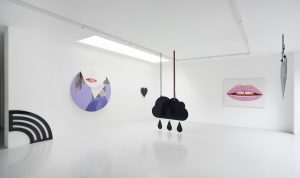 Brian Calvin, Wendy White, installation view, 2017, Cabinet, Milan. Ph. Filippo Armellin, courtesy the artist and Cabinet, Milan
Brian Calvin, Wendy White, installation view, 2017, Cabinet, Milan. Ph. Filippo Armellin, courtesy the artist and Cabinet, Milan
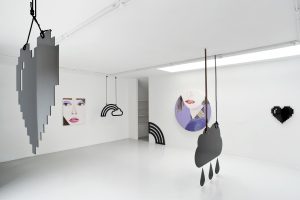 Brian Calvin, Wendy White, installation view, 2017, Cabinet, Milan. Ph. Filippo Armellin, courtesy the artist and Cabinet, Milan
Brian Calvin, Wendy White, installation view, 2017, Cabinet, Milan. Ph. Filippo Armellin, courtesy the artist and Cabinet, Milan
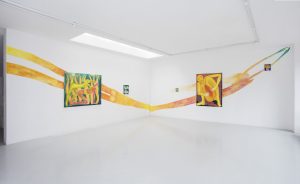 Cecilia Granara, installation view, 2020, Studiolo, Milan. Ph. Filippo Armellin, courtesy the artist and Cabinet, Milan
Cecilia Granara, installation view, 2020, Studiolo, Milan. Ph. Filippo Armellin, courtesy the artist and Cabinet, Milan
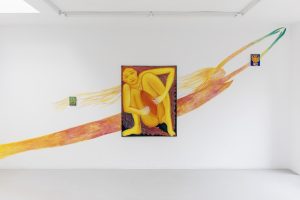 Cecilia Granara, installation view, 2020, Studiolo, Milan. Ph. Filippo Armellin, courtesy the artist and Cabinet, Milan
Cecilia Granara, installation view, 2020, Studiolo, Milan. Ph. Filippo Armellin, courtesy the artist and Cabinet, Milan
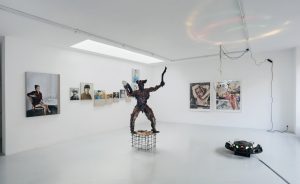 Matyáš Chochola, Christian Jankowski, installation view, 2018, Cabinet, Milan. Ph. Filippo Armellin, courtesy the artist and Cabinet, Milan
Matyáš Chochola, Christian Jankowski, installation view, 2018, Cabinet, Milan. Ph. Filippo Armellin, courtesy the artist and Cabinet, Milan
 Pierpaolo Calzolari, Pitture, installation view, 2021, Cabinet, Milano. Ph. Filippo Armellin, courtesy the artist and Cabinet, Milano
Pierpaolo Calzolari, Pitture, installation view, 2021, Cabinet, Milano. Ph. Filippo Armellin, courtesy the artist and Cabinet, Milano
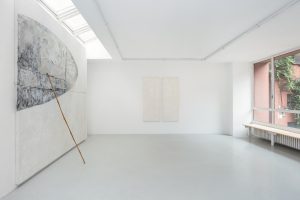 Pierpaolo Calzolari, Pitture, installation view, 2021, Cabinet, Milano. Ph. Filippo Armellin, courtesy l’artista e Cabinet, Milano
Pierpaolo Calzolari, Pitture, installation view, 2021, Cabinet, Milano. Ph. Filippo Armellin, courtesy l’artista e Cabinet, Milano
 Sylvie Fleury, Alexander Wagner, Warp & Weft, installation view, 2013, Cabinet, Milan. Courtesy the artist and Cabinet, Milan
Sylvie Fleury, Alexander Wagner, Warp & Weft, installation view, 2013, Cabinet, Milan. Courtesy the artist and Cabinet, Milan
 Jimmy Milani, esco da qui, installation view, 2022, Studiolo, Milan. Ph. Michela Pedranti, courtesy the artist and Cabinet, Milano
Jimmy Milani, esco da qui, installation view, 2022, Studiolo, Milan. Ph. Michela Pedranti, courtesy the artist and Cabinet, Milano

Through art she feels the need to get closer to nature, deciding to create an artistic residence on Etna as a “refuge for contemporary art” for artists and scholars. Thus was born Nake artistic residence. She won the Responsible Etna Award 2015. In 2017, she was invited to the Sala Zuccari, Senate of the Republic, as an art critic. She writes for Italian and foreign artists. Curator of the first Museum of Contemporary Art of Etna and of the “Contemporary Etna” project.






NO COMMENT